Transforming a room into a retro-inspired haven can breathe new life into your space, blending nostalgia with modern flair. Whether you’re aiming for a sleek 70s vibe or a cozy vintage charm, retro decorating ideas offer endless possibilities to create a unique and inviting atmosphere. With the right mix of color palettes, iconic furniture, and thoughtful design choices, anyone can achieve a retro look that reflects their personal style. From incorporating bold patterns and vibrant hues to repurposing classic pieces, retro decorating is a fantastic way to inject character and individuality into your home. Explore how to seamlessly integrate retro elements while keeping your space feeling fresh and contemporary. Get ready to discover the secrets behind creating a retro retreat that stands out and captivates those who walk in.
Key Takeaways
– Define Retro Style: Understand the differences between vintage and retro, focusing on the nostalgic charm and modern interpretations of past eras.
– Incorporate Key Characteristics: Embrace historical inspiration, muted color palettes, eclectic mixes, and natural elements to create a timeless vibe.
– Leverage Popular Elements: Use vintage lighting, textiles, art, and natural accents to enhance your space’s retro appeal.
– Modern Twists: Blend old and new by mixing classic designs with contemporary furniture and sustainable practices.
– Practical Tips: Source vintage items, repurpose finds, layer styles thoughtfully, and prioritize quality for long-lasting decor success.
– Balance Old and New: Create a cohesive look by combining vintage elements with modern touches, ensuring functionality and charm.
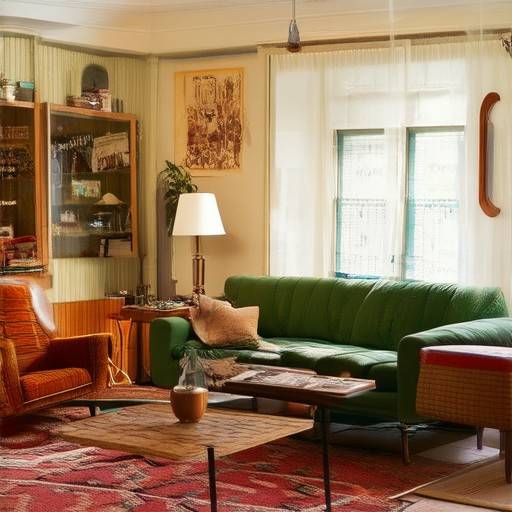
How to Make a Room Look Retro
To achieve a retro aesthetic in your room, focus on incorporating key elements from past decades, such as mid-century modern design, 70s funk, or 80s neon vibes. Here’s a step-by-step guide:
1. Embrace Bold Colors
- Opt for earthy tones and vibrant hues that were popular in the mid-20th century. Colors like avocado green, burnt orange, and mustard yellow can instantly evoke a retro feel. Consider using these shades on your walls or in fabric selections for curtains and upholstery.
2. Retro-Inspired Furniture
- Invest in vintage or reproduction furniture pieces that reflect mid-century modern design. Look for iconic pieces like Eames chairs, modular sofas, or teak dining sets. Platforms like RetroSales offer curated collections of vintage and reproduction furniture.
3. Vintage Lighting
- Add a statement piece with a large chandelier or pendant light from the 1970s. Consider geometric shapes or bohemian-inspired designs. Websites like Wayfair and HomeGoods carry retro-inspired lighting options.
4. Textile and Fabric Choices
- Incorporate floral patterns, stripes, or textured fabrics like velvet and corduroy. These textures and patterns were prominent in earlier decades and can add a retro touch to your room’s soft furnishings.
5. Decorative Elements
- Add vintage artwork or framed photographs from previous eras. Consider mirrors with decorative borders or frames that reflect mid-century design. Thrift stores and flea markets are great places to find unique pieces.
6. Mix Old and New
- Combine vintage items with modern furniture to create a balanced retro look. For example, layer a mid-century modern sofa with throw pillows featuring retro-inspired motifs.
7. Layered Lighting
- Use a combination of task lighting, ambient lighting, and accent lighting to create a warm, inviting atmosphere. String lights or table lamps with retro-inspired bases can enhance the nostalgic feel.
8. Retro-Inspired Wall Art
- Hang vintage posters or artwork that reflects the era you’re aiming for. Look for reproductions of iconic works from the 60s or 70s.
9. Furniture Arrangement
- Arrange furniture to encourage social interaction, reminiscent of communal spaces from the past. Group seating areas and include coffee tables or sideboards for displaying retro-inspired decor.
10. Plants and Greenery
- Add lush plants in vintage pots or terrariums to bring life into the room. Plants like ferns or succulents can complement the retro vibe while adding freshness to the space.
By thoughtfully combining these elements, you can transform your room into a retro haven that feels timeless yet authentic.
Exploring 1970s Home Decor Styles
The 1970s were a decade of vibrant creativity and experimentation in home decor, leading to a unique blend of styles that continue to inspire today. Here’s a breakdown of the key decorating trends from this era:
Color Palettes
The 1970s were defined by bold, jewel-tone colors and earthy tones. Popular color combinations included avocado green, mustard yellow, brown, and deep reds. These hues created a warm, inviting atmosphere and were often paired with contrasting white or beige walls to emphasize texture.
Furniture Styles
Mid-century modern influences were prevalent, with sleek, minimalist designs dominating living rooms and bedrooms. Modular furniture, inspired by designers like Charles Eames, was a staple, offering flexibility and functionality. Upholstered pieces featured geometric patterns and bold textures, reflecting the era’s love for drama.
Textile Choices
Velvet, corduroy, and shag rugs were popular flooring options, adding a luxurious feel to spaces. Bedding often featured floral prints, paisleys, and geometric motifs, with throws and pillows used to enhance color and pattern contrast.
Accessories and Details
Macramé was a favorite for window treatments and wall hangings, bringing an artistic touch to interiors. Handmade pottery and ceramic decor were also widely used, showcasing the craftsmanship of the time. Natural elements like plants and woven baskets added a rustic charm.
Lighting and Decor
Huge statement chandeliers and pendant lights became hallmarks of 1970s homes. These fixtures were often paired with bold, patterned shades that complemented the room’s color scheme. Mirrors were used liberally to reflect light and create a sense of space.
Global Influences
The 1970s brought a global perspective to home decor, with influences from Asia, Africa, and South America. Intricately carved wooden pieces, tribal-inspired patterns, and bohemian jewelry reflected this cultural exchange.
Retro Sales: A Nostalgia Haven
For those looking to bring 1970s style into modern homes, Retro Sales offers a curated collection of vintage items and collectibles. Their blog provides insights into retro culture, nostalgia, and vintage trends, celebrating the charm of yesteryear. Explore their marketplace for unique finds and discover how to revitalize classic styles in your own space.
Explore Retro Sales to find inspiration and authentic decor pieces that capture the spirit of the 1970s.
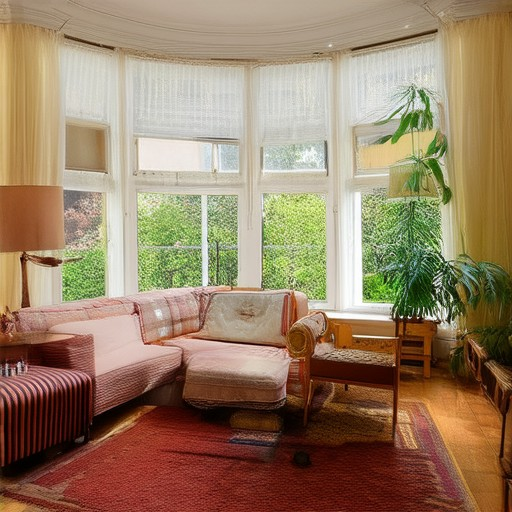
What is Retro Interior Design Style?
Retro interior design style is a celebration of nostalgia, blending the charm of past eras with modern living. It’s all about reviving iconic design elements from the mid-20th century, creating spaces that feel timeless yet unique.
Key Elements of Retro Interior Design
- Color Palette : Bold, vibrant colors dominate, evoking a sense of joy and energy. Think 1970s sunsets or 1950s diner aesthetics.
- Furniture : Iconic pieces like mid-century modern sofas, teak dining sets, and vintage-inspired lighting take center stage.
- Patterns and Textiles : Geometric patterns, floral motifs, and tapestries add visual interest, reminiscent of the 70s bohemian movement.
- Materials : Natural materials like wood, stone, and metal are often incorporated, nodding to earlier craftsmanship.
- Appliances and Fixtures : Retro-style appliances and fixtures, like vintage refrigerators or clawfoot bathtubs, add character to any space.
How to Incorporate Retro Style
- Mixing Eras : Combine retro elements with contemporary furnishings for a balanced look.
- Accessorizing : Add quirky decor like vintage cameras, neon signs, or record players.
- Lighting : Use pendant lights, chandeliers, or Edison bulbs for an inviting ambiance.
Common Mistakes to Avoid
- Overloading the space with too many retro items.
- Ignoring functionality for the sake of aesthetics.
- Choosing cheap, mass-produced “vintage” pieces that lack authenticity.
Retro interior design allows you to create a personalized sanctuary that tells your story. Whether you’re redoing a kitchen or updating a living room, retro style offers endless possibilities to make your space truly unique.
Explore our curated collection of vintage finds and retro-inspired pieces to bring this timeless aesthetic into your home. Visit us at RetroSales today!
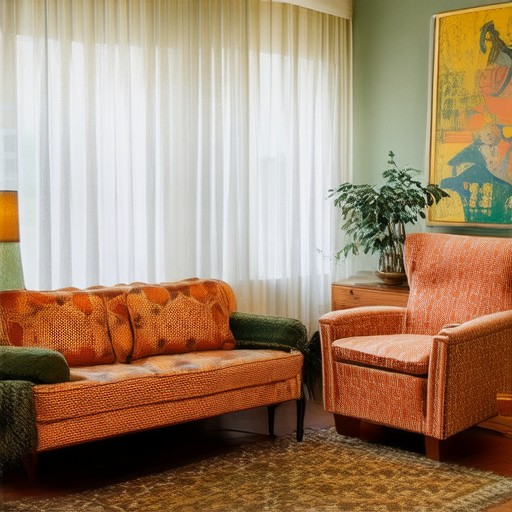
What is Vintage Decorating Style?
Vintage decorating style refers to a design aesthetic that draws inspiration from past eras, blending historical elements with modern sensibilities. This style emphasizes the charm and uniqueness of earlier times, often incorporating antiques, classic patterns, and timeless pieces to create inviting and eclectic spaces.
Key Characteristics of Vintage Decorating Style
- Historical Inspiration : Vintage style pulls from various decades, such as mid-century modern, art deco, Victorian, or industrial designs, reflecting the cultural and artistic movements of the past.
- Color Palettes : earthy tones, muted hues, and rich textures dominate vintage color schemes, often featuring deep reds, greens, golds, and browns.
- Furniture and Accessories : Vintage decorating often features handcrafted or antique furniture, vintage lighting, and unique decorative items that tell a story.
- Eclectic Mix : The style mixes contrasting styles, textures, and periods to create a visually interesting and layered look.
Popular Elements of Vintage Decor
- Vintage Lighting : Statement chandeliers, Edison bulbs, and mismatched lanterns are common features.
- Textiles : Handmade rugs, tapestries, and vintage fabrics add warmth and texture to spaces.
- Art and Decor : Abstract paintings, vintage photographs, and quirky found objects often adorn walls and surfaces.
- Natural Elements : Plants, vintage botanical prints, and natural fibers bring organic beauty into rooms.
Modern Interpretations of Vintage Style
- Mixing Old and New : Today’s vintage style often blends historical elements with contemporary design, creating a fresh take on classic aesthetics.
- Sustainable Living : Many fans of vintage style appreciate the durability and craftsmanship of older items, aligning with eco-friendly lifestyles.
- Global Influences : Vintage style today incorporates global design influences, reflecting a worldlier perspective on home decor.
Tips for Incorporating Vintage Style
- Source Vintage Items : Explore flea markets, thrift stores, or online platforms like Retro Sales to find unique pieces.
- Repurpose Finds : Transform old items into functional decor by repurposing them into new uses.
- Layer with Care : Combine different eras and styles thoughtfully to avoid clutter and create a cohesive look.
- Focus on Quality : Invest in well-made pieces that will stand the test of time, rather than chasing trends.
By embracing the essence of vintage decorating style, you can create a space that feels timeless, personal, and filled with character.
Understanding Vintage and Retro Style
Vintage and retro are two terms often used interchangeably, but they have distinct meanings:
- Vintage : Refers to items or products that are at least 20 years old and are considered authentic and original from a specific historical period. Vintage goods are often sought after for their uniqueness and historical significance.
- Retro : Describes items or designs that are inspired by or mimic the styles of the past, often creating modern versions that pay homage to classic designs. Retro products can be new but look outdated or old-fashioned.
Key Differences
- Age : Vintage items are typically from a specific historical era, while retro styles can be inspired by eras past but may not necessarily be decades old.
- : Vintage items are original and often rare, while retro items are usually reproductions or modern takes on classic designs.
- Purpose : Vintage goods are appreciated for their historical value, whereas retro styles are often embraced for their nostalgic appeal and aesthetic.
Examples
- Vintage clothing from the 1950s or 1970s is highly valued for its unique style and historical context.
- Retro fashion, on the other hand, might feature modern takes on 1920s flapper dresses or 1960s minidresses.
Why Choose Retro Sales?
Retro Sales offers a curated collection of vintage and retro-inspired items, bringing together the charm of yesteryear with modern convenience. Our platform connects enthusiasts with unique finds and provides insights into retro culture, making it easier to embrace the past with a fresh perspective.
Explore our marketplace today and dive into the world of vintage and retro treasures. Whether you’re looking for authentic vintage pieces or stylish retro replicas, Retro Sales has something for everyone.
Visit Retro Sales to discover our collection and join the retro revolution!

How to Make Your Home Look Vintage
To transform your home into a vintage haven, consider the following steps:
1. Incorporate Timeless Furniture
Start by updating your furniture with classic, handcrafted pieces. Visit local flea markets or browse online platforms like Etsy for affordable vintage-inspired furniture. Mix and match styles to create an eclectic look without breaking the bank.
2. Opt for Muted Color Palettes
Vintage aesthetics often feature muted tones like deep browns, greens, and soft grays. Consider painting your walls in these colors or adding throw pillows and curtains in analogous hues to evoke a timeless atmosphere.
3. Enhance Lighting
Update your lighting fixtures with vintage-inspired pieces. Consider adding table lamps with shaded bulbs or string lights for a cozy, inviting glow. These additions can significantly contribute to the retro charm of your space.
4. Use Textiles and Fabrics
Add warmth and texture with vintage-looking rugs or curtains. Reproduction fabrics and patterns can easily be found at fabric shops or online marketplaces, allowing you to infuse your home with a touch of nostalgia.
5. Display Family Heirlooms
Showcase your cherished family heirlooms in prominent spots. Place vintage jewelry, old photographs, or inherited items on display to add a personal, historical element to your home decor.
6. Add Vintage Accessories
Accessorize your space with vintage-looking items like old books, vintage picture frames, and decorative mirrors. These can be found at thrift stores or through online vendors specializing in retro goods.
7. Experiment with Furniture Arrangement
Don’t fear mismatched styles! Arrange furniture in an eclectic manner, mixing different periods and pieces to create a unique, vintage ambiance. Group chairs and tables together to form cozy seating areas.
8. Introduce Greenery
Bring life into your home with vintage-inspired plants. Choose low-maintenance varieties and present them in vintage pots or terrariums to enhance the retro feel while adding freshness to your space.
9. Create a Cozy Atmosphere
Make your home feel inviting by adding soft textures and comfortable seating. Invest in plush blankets, cushions, and throws to ensure your space is both stylish and comfortable.
10. Balance Vintage and Modern
Combine vintage elements with contemporary furniture to strike the perfect balance. This approach ensures functionality while maintaining the charm of a bygone era.
By focusing on these key areas, you can effortlessly transform your home into a vintage retreat that exudes timeless elegance and comfort.
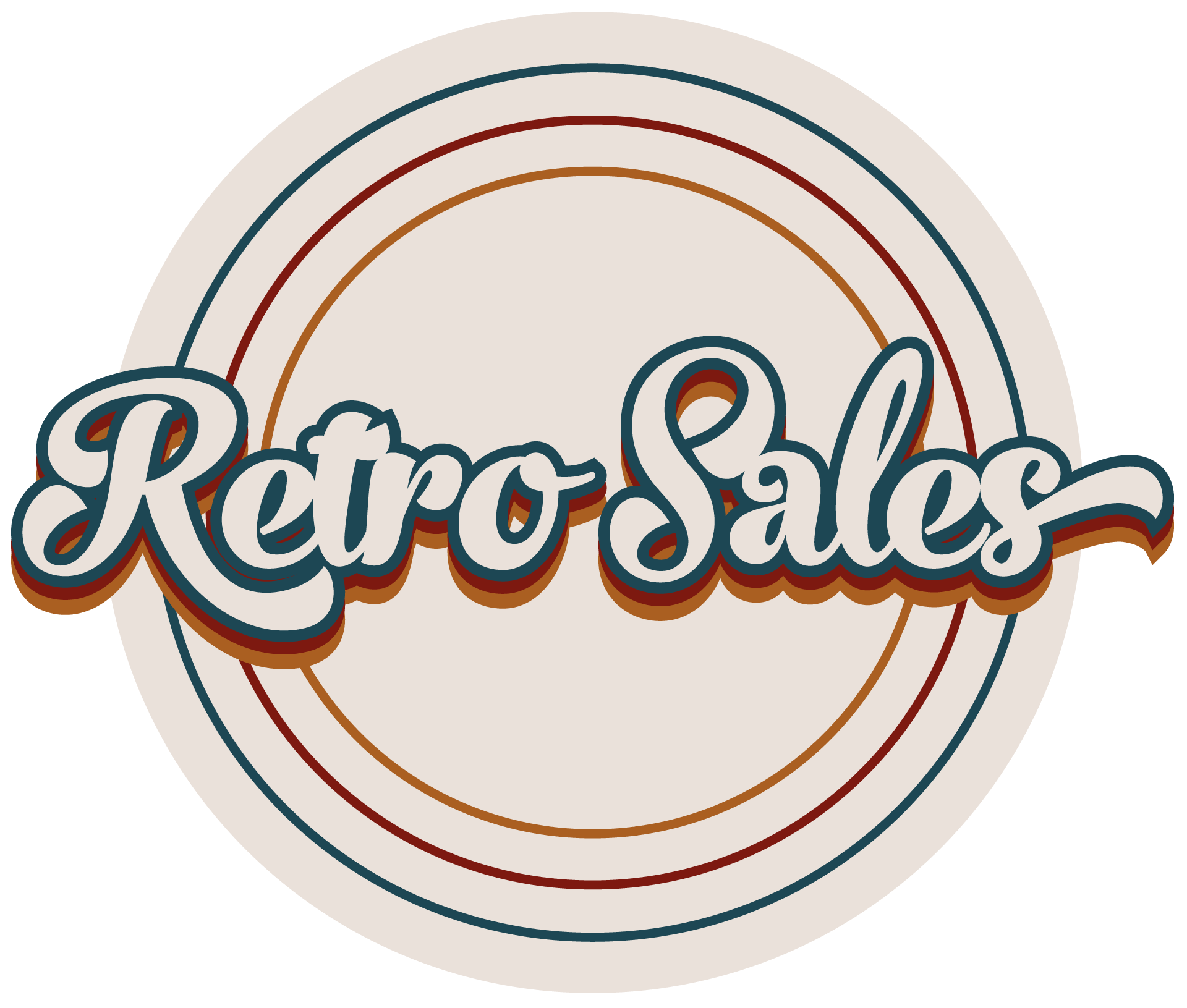
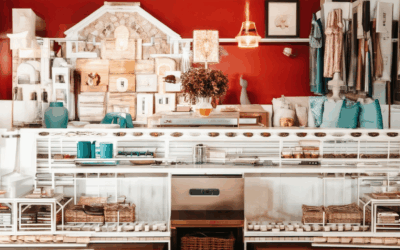
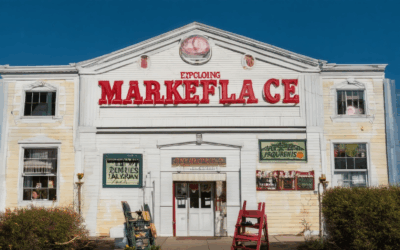
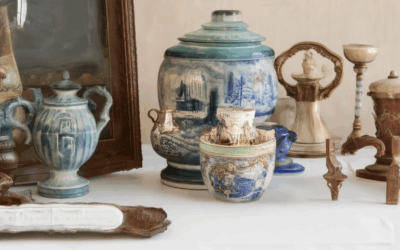
0 Comments